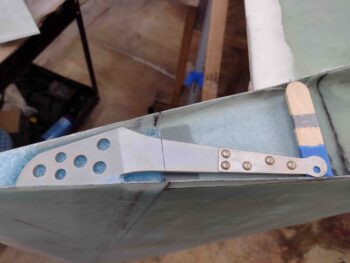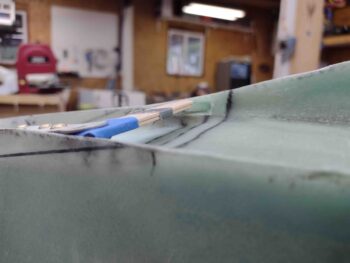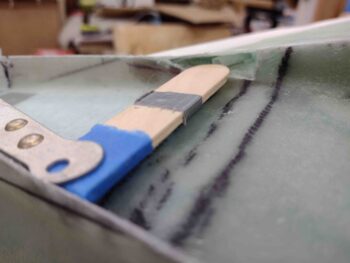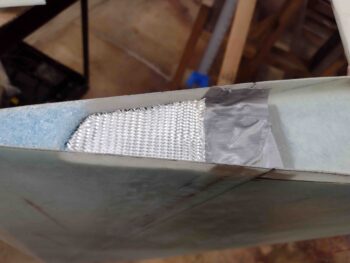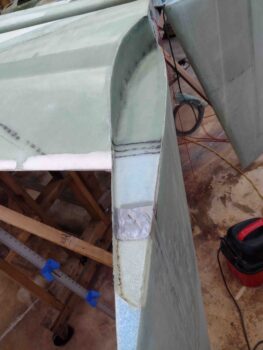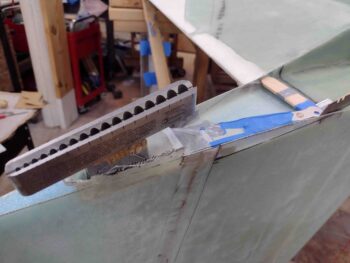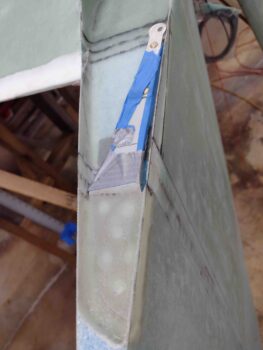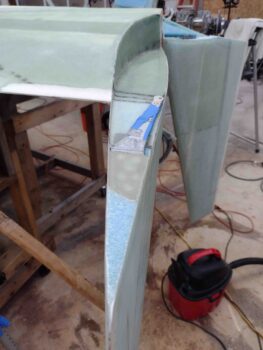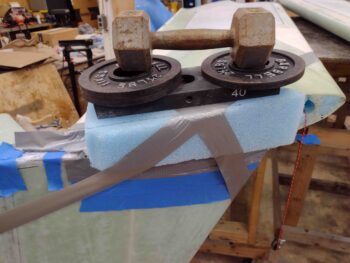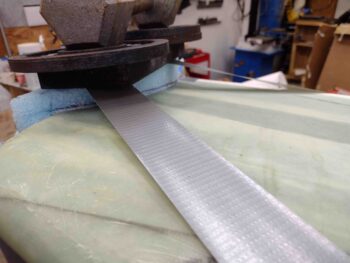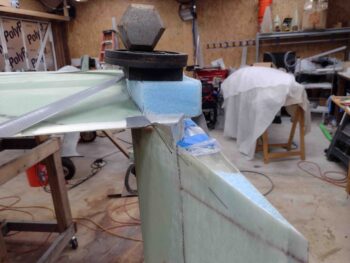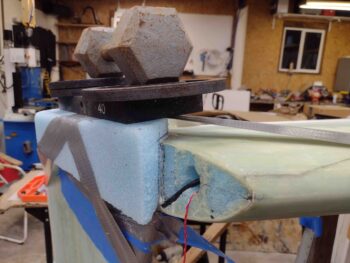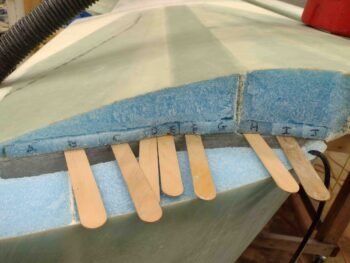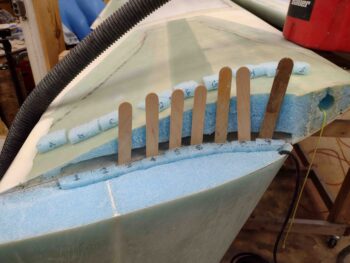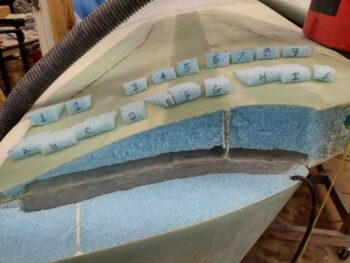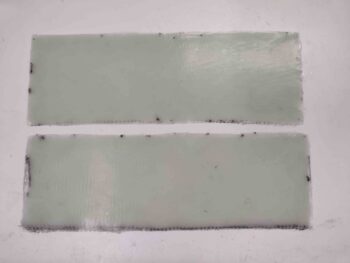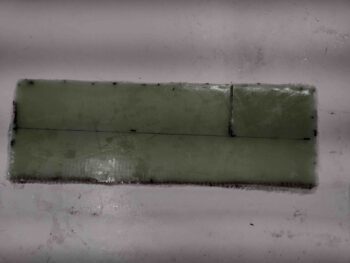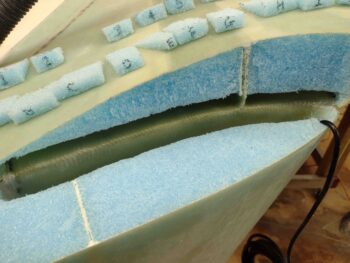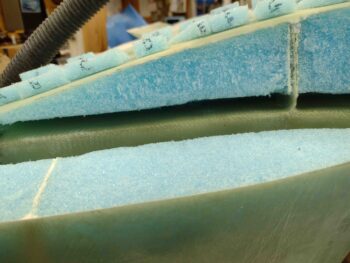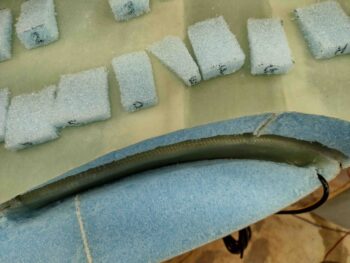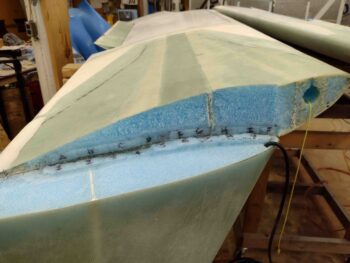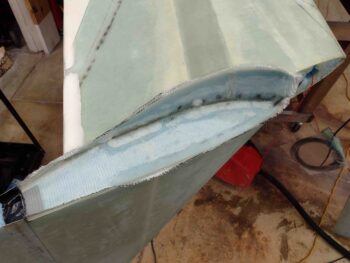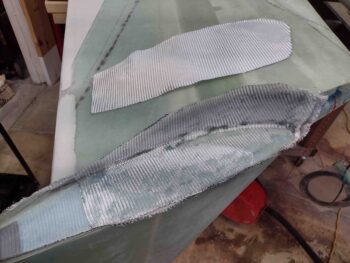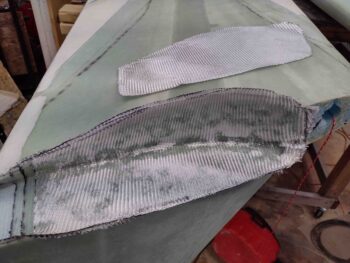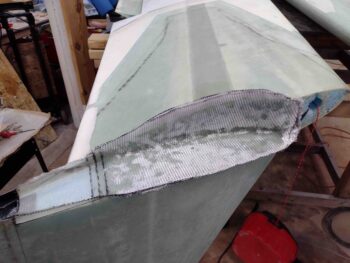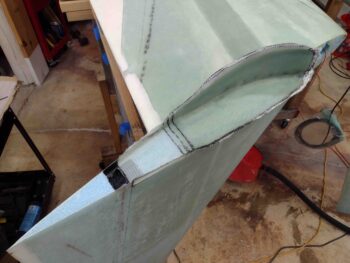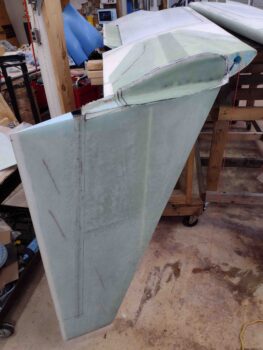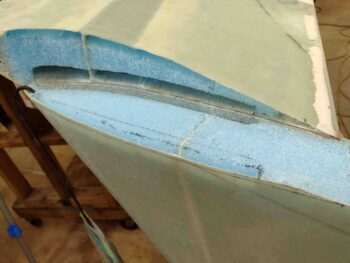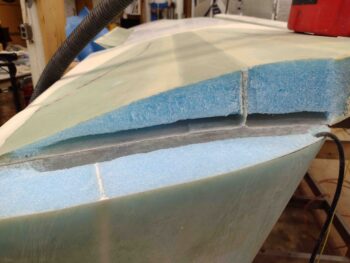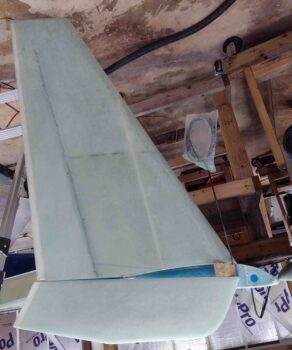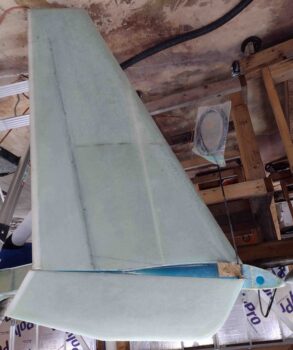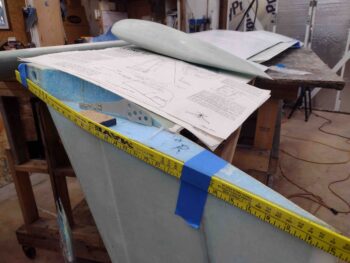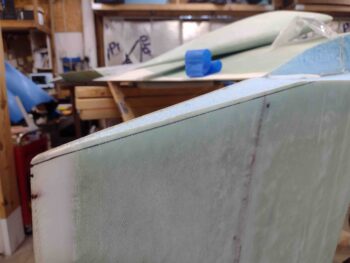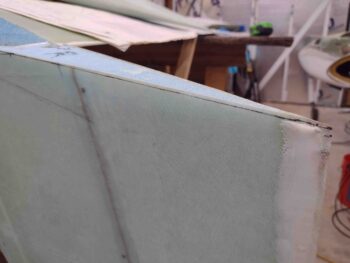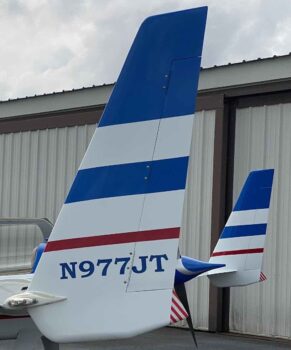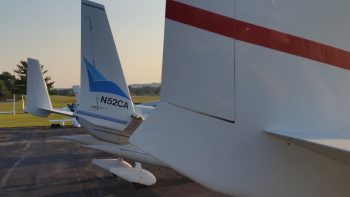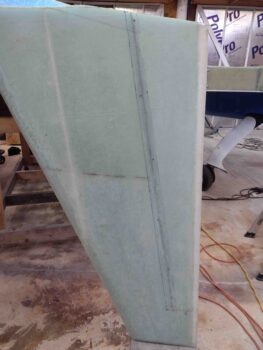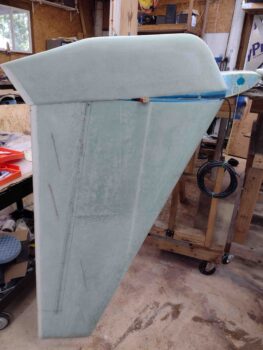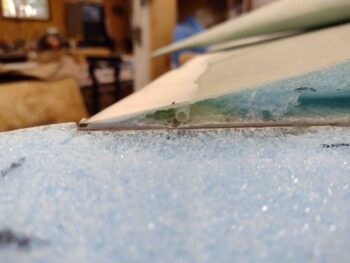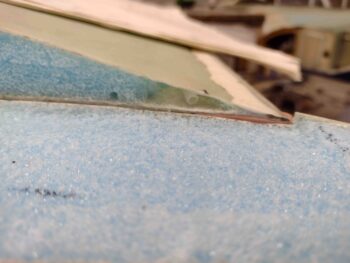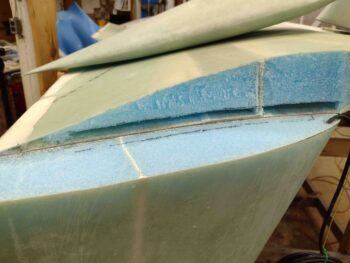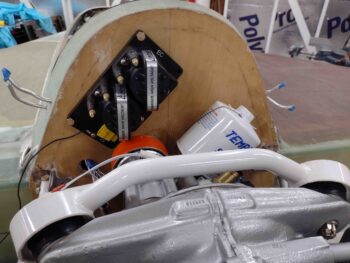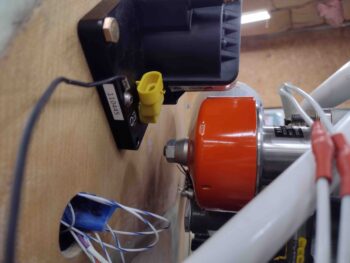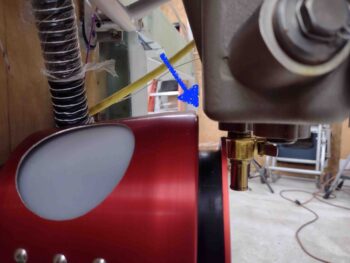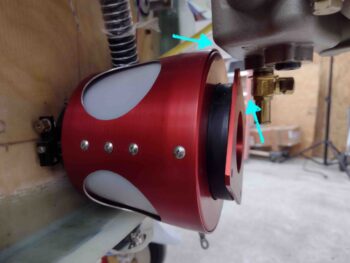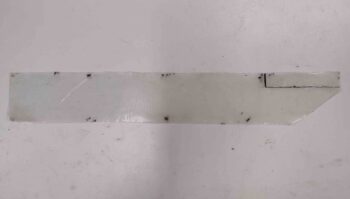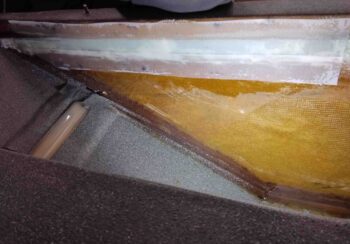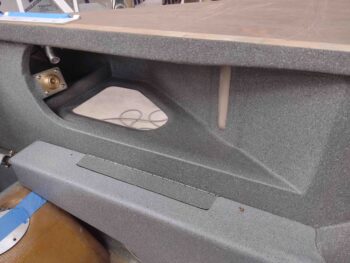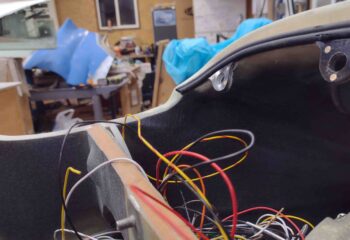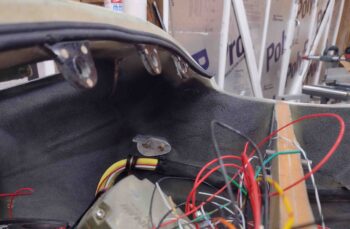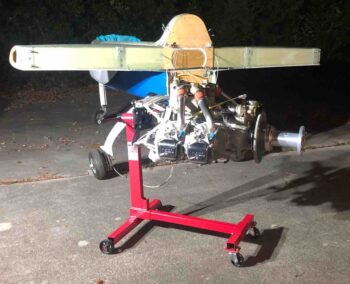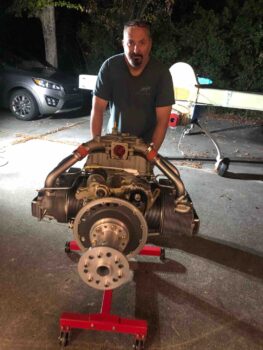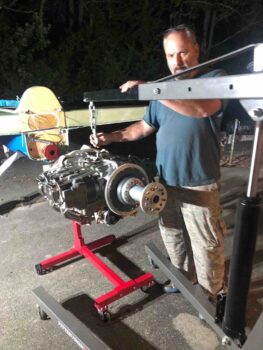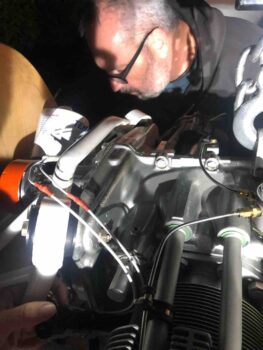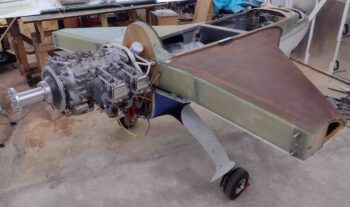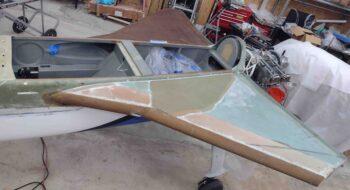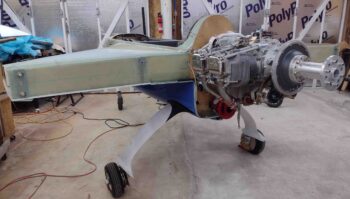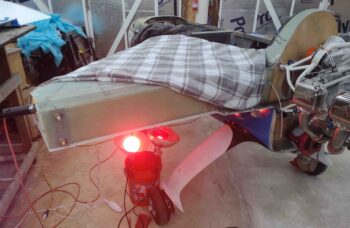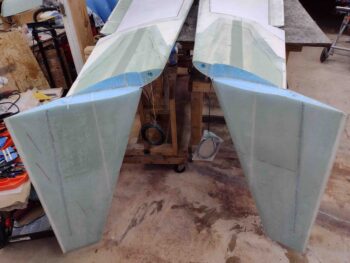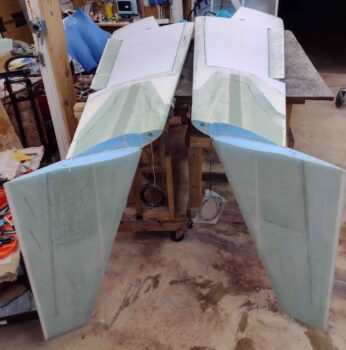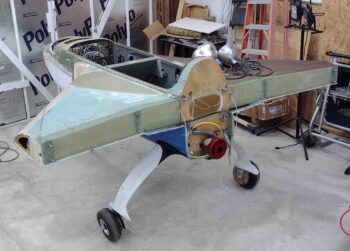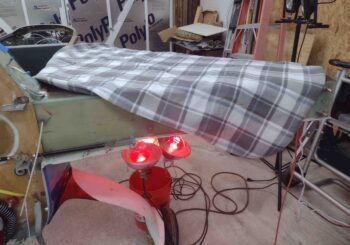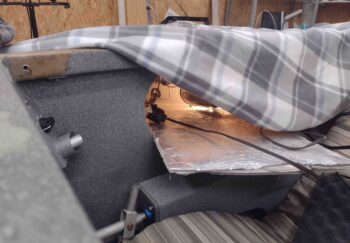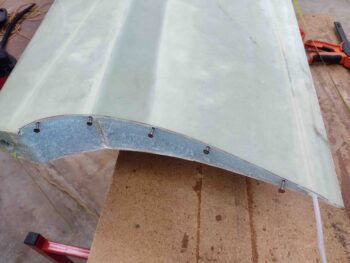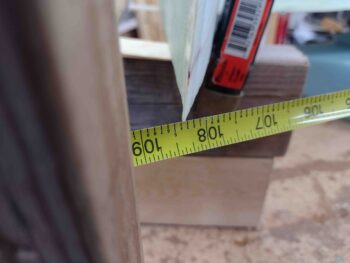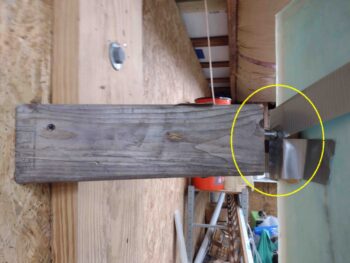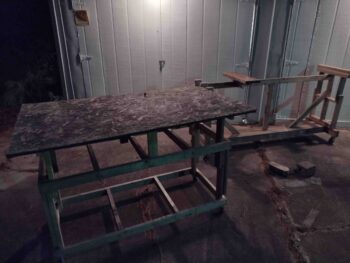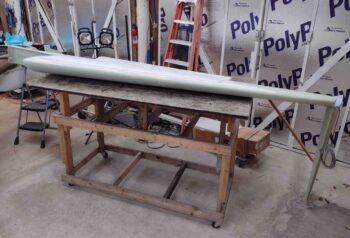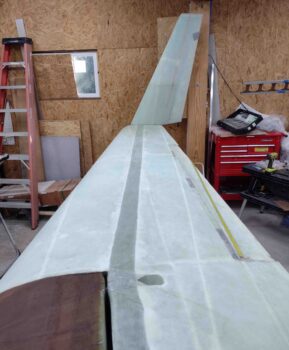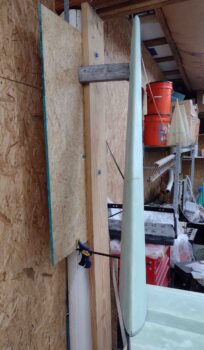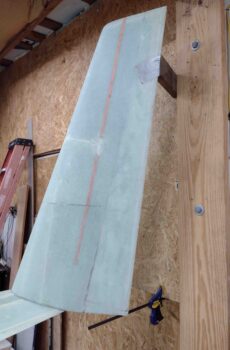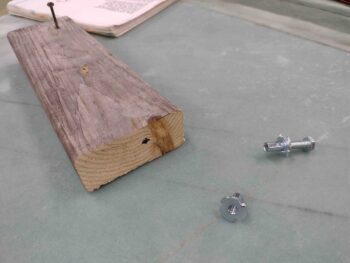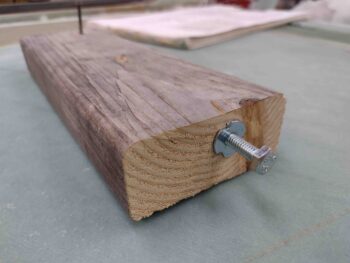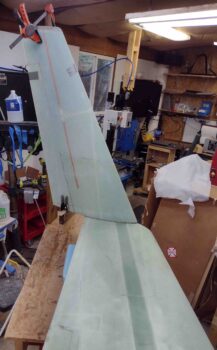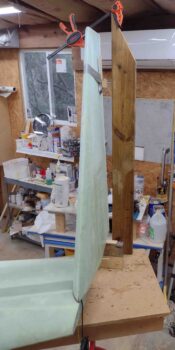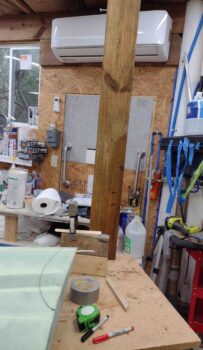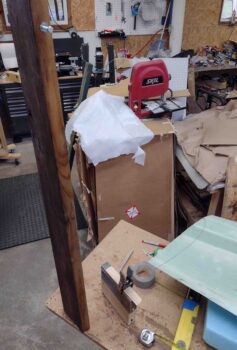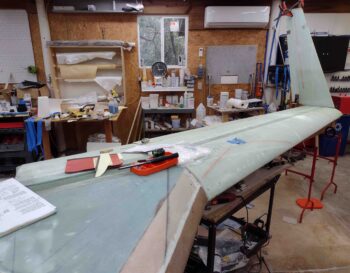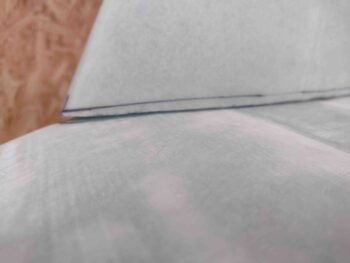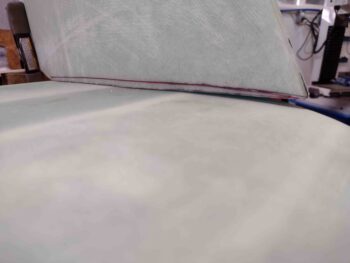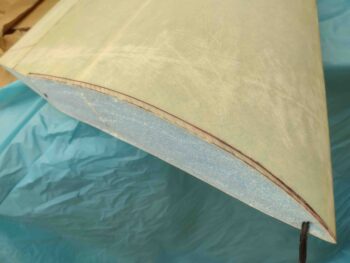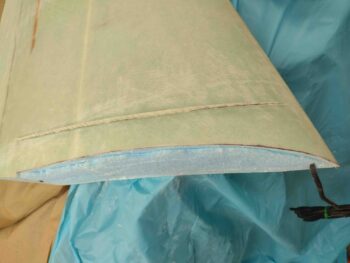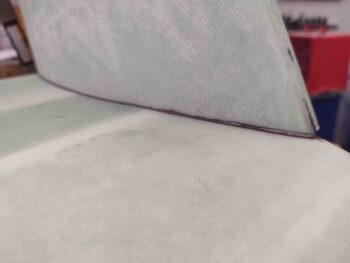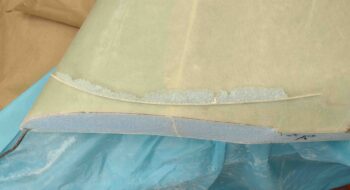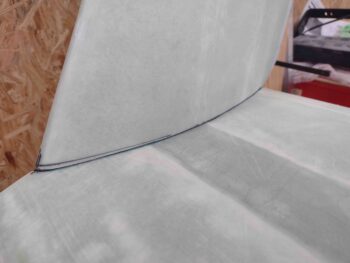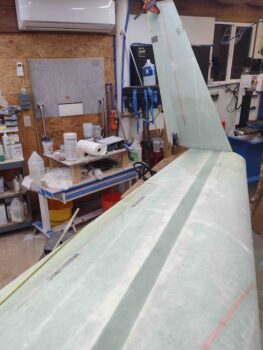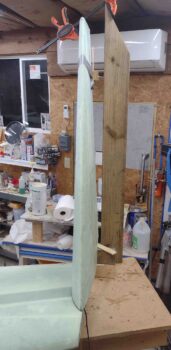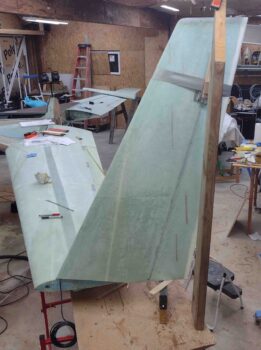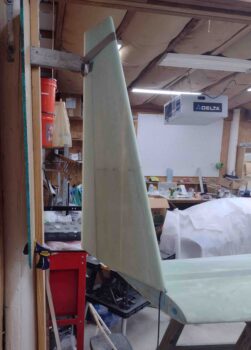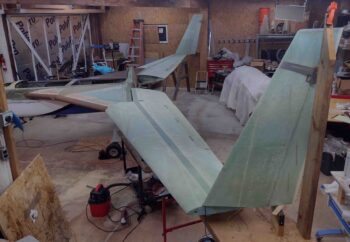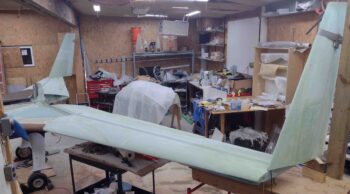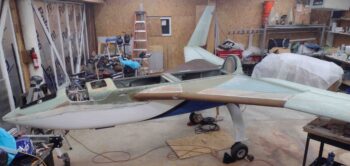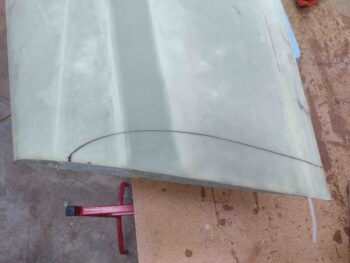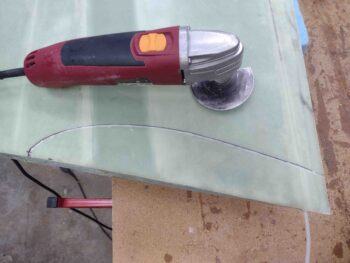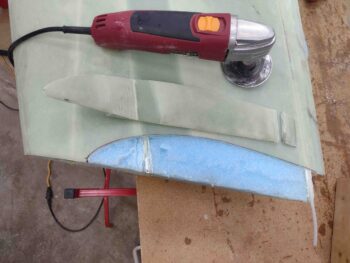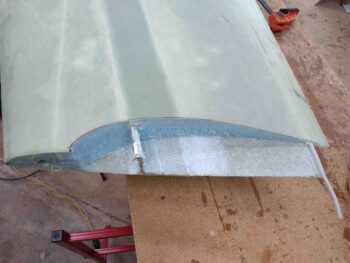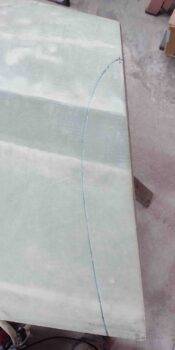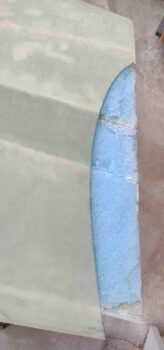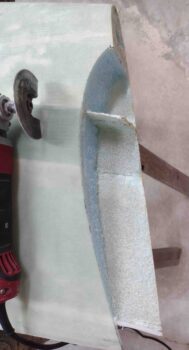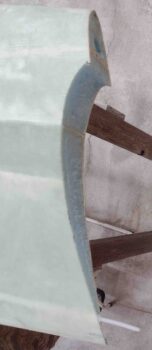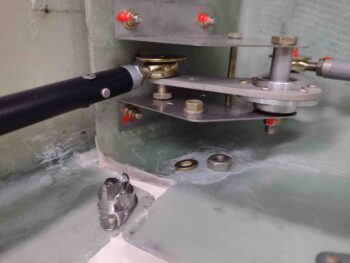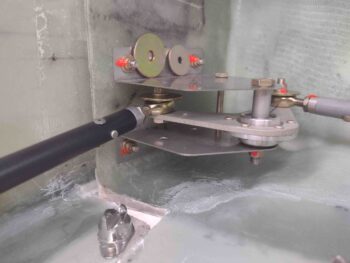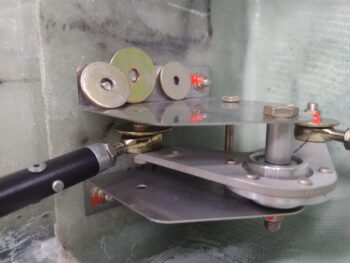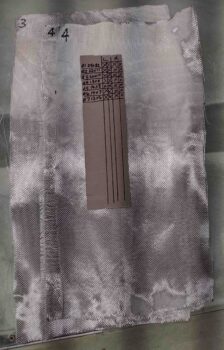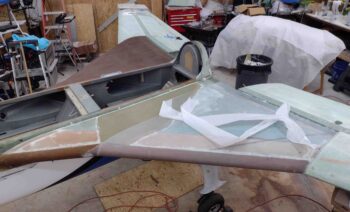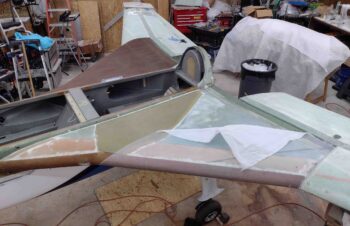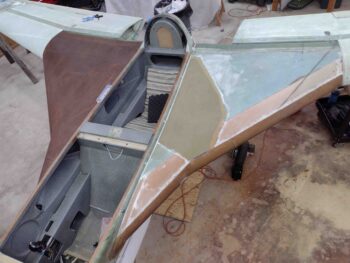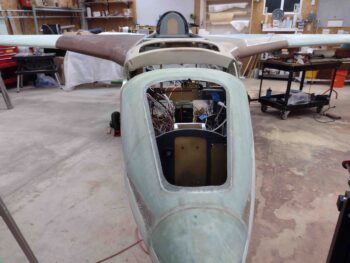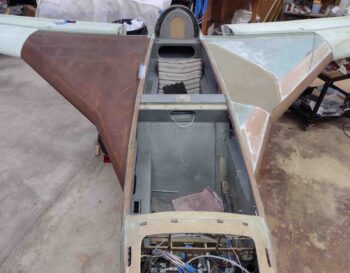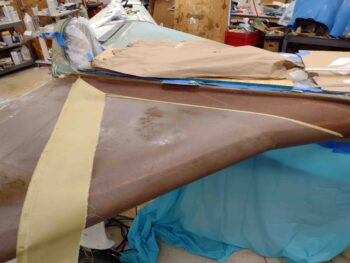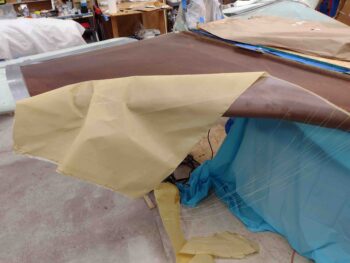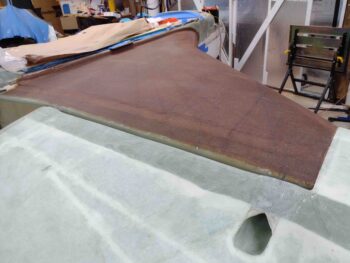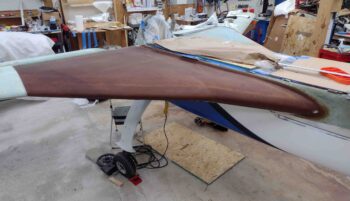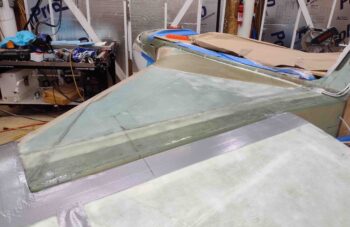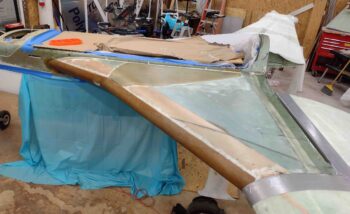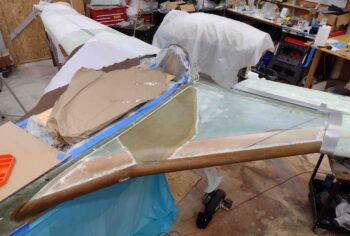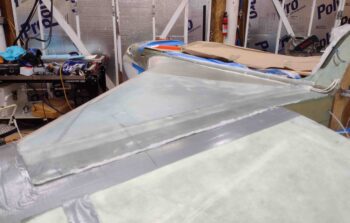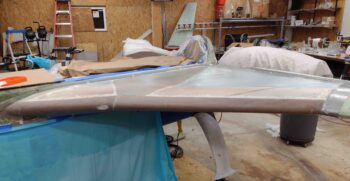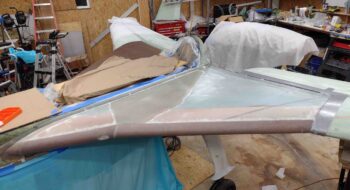I decided this morning that before I did my next identified task: micro in the blue foam ‘A’ Block into the pocket created by Layup #2 on the left wing/winglet, that I would first determine the install configuration of the left rudder’s Internal Bellhorn and then flox and glass it into place.
Last night and this morning I did a lot of reviewing of other builders’ blogs, specifically Dave Berenholtz and Ary Glantz. Dave referred to Wayne Hicks’ method of installing the Internal Bellhorn before the rudders are even cut out. Yes, a little bit more risk there, but the payoff is pretty high…
I’ll take it!
Thus, just as Dave B. did, I’m installing the Internal Rudder Bellhorns early on in the winglet & rudder construction process.
One reason that branches off in a couple minor directions is this: It let’s me know how to configure my ‘A’ Block and where to terminate it on the aft side to leave room for the Bellhorn to pivot.
As an adjunct to that, it allows you to “bury” the installed rudder Bellhorn in foam and tape to work as a bridge for all the glass going on the outside corner of the winglet & wing. Wayne has some great ideas, and even though I know it would work and be safe, his process was to do this after the big outside winglet corner layup… which involves cutting into that big layup glass. I’d rather build a bridge and leave that glass alone.
Here’s my initial placement of my left rudder Bellhorn. I will say that I ended up moving it at least 3/16″ forward of where it is here. The nice thing about this spot is that the Bellhorn is as far back as it can go into the rudder pocket, against the rudder internal sidewalls. The throw is better here too, since you get more of swing out. However, as Wayne Hicks points out, you also may not have as good as pull geometry and the front edge of your Bellhorn may not go into the wing at all… or get jammed in the aft angle of the wing rudder conduit opening.
During this initial Bellhorn install configuration, the two main things I was looking at are 1) the positioning fore and aft as I point out above. And 2) the angle of Bellhorn pivot arm in relation to the rudder cable conduit. The Internal Rudder Bellhorn plans points out that at full rudder deflection, the tip of the Bellhorn pivot arm should be level with the rudder cable conduit inside the wing.
Ah, but there is a bit of twist… or better said, an angle on all this. Since our winglets are mounted slanted inward a bit, then the Bellhorn arm actually pivots DOWN to then reach and be in line with the opening of the rudder cable conduit. Clearly with the wing upside down, this means there is a slight upward rotation of the Bellhorn pivot arm.
That’s what I’m looking to achieve here: starting a bit low outboard and moving a bit higher at the end of the inboard swing. That’s what my two taped popsicle sticks are showing me… the elevation of my pivot swing.
As with all things on these builds, there almost always seems to be a “gotcha!”
Well, mine was that as I was dialing in the configuration of the left rudder Internal Bellhorn with the mounting area in the rudder, as I was sanding down the foam I left the internal rudder walls rough. At one point when I had done another round of sanding to get the Bellhorn just a tad lower to bring the pivot swing a hair down, I pressed down on the aft end and it crunched through a bit of micro on the sidewall that was keeping it higher than the foam… not a huge difference, but it did result in the Bellhorn tip a bit lower than the rudder cable conduit. Enough that I felt I should add another ply of BID for 3 plies total to the initial layup that the Bellhorn gets floxed into.
Here we have the Internal Bellhorn initial securing BID layup in the rudder that will allow floxing and “top” glass to secure the Bellhorn in place. I used fast hardener so it would cure as quick as possible.
I also realized I hadn’t got a shot of Layup #2 after I had razor & Fein saw trimmed away all the excess glass.
I then floxed in the left rudder Internal Bellhorn and laid up 2 plies of BID over top of it. I then peel plied the layup and added a taped block with just a bit of weight to make sure the aft end of the floxed Bellhorn mounting arm was pressed as firmly down as possible.
Here is the result a few hours later after I pulled the peel ply.
And a broader shot of the floxed in left rudder Internal Bellhorn with 2 plies of BID securing it in place.
I then spent about an hour and a half making up the ‘A’ Block for the left wing/winglet.
Actually, to be completely accurate I should say I made up 3 ‘A’ Blocks because the first two were fails: #1 being too small right out of the gate, and #2 being good up until I started shaping the inside curve at the forward end… which screwed up the aft side. I learned to work the front first and then after it was completely dialed in, tweak the back. Oh, and with a much oversized piece of foam to allow for inside seam movements.
With the left wing/winglet blue foam ‘A’ Block micro’d and weighed in place, I called it a night.
Tomorrow I plan to press forward on getting these winglets installed on the wings!

